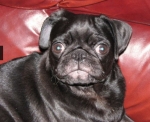In the SmartLink reports, I'm seeing a problem with Hypopneas. I'll have 1 or 0 obstructive apneas, maybe 2 to 4 NRI events (which I am assuming are central apneas) and maybe 20-30 hypopnea events.
Here is an example... my pressure setting was 4-7, average was 4.4, median 4.0, max 6.6, 90 & 95% was 6.0

Here is another example... my pressure setting was 5-9, average was 6.7, median 6.4, max 8.9, 90 & 95% was 9.0

Also, until reviewing my PSG (posted below) I thought I had OSA. This is what the doctor had spoken with me about (prior to the sleep studies) and after the study nothing was mentioned on exactly what the diagnoses was. I just assumed that I had OSA since my doctor prescribed an Auto CPAP. It looks like I didn't have enough obstructive apneas for an OSA diagnoses but I did have a lot of central/mixed events. This is where I get really confused. I thought, from reading the forums, that CSA was treated with an ASV type machine and a CPAP was not very effective. Obviously my doctor saw the large number of central events on my study. Is it likely that he thinks I will be fully treated on an auto CPAP? Why wouldn't he prescribe an ASV machine? Do I even have CSA? I don't yet have the summary report from my titration study. I've asked the doctors office for it and they told me they will get it to me soon, but the doctor needs to "finish it". I tried to pick a good doctor. He is a neurologist that is board certified in sleep medicine.
I'm having a really rough time with this treatment and I really appreciate any advice on what direction I should go in. I realize some things take time, and I'm willing to take long term advice or give my current treatment more time. I've gotten use to sleeping with the mask, but I feel like I might feel better sleeping without it at this point. I really want to make this therapy work. Thanks for any advice.
Patient: XXXXXXXXXX
DOB: XX/XX/XXXX
AGE: 29
Gender: Male
Diagnostic Polysomnogram
Major Findings and Recommendations:
SUMMARY: No evidence of Possible Clinically significant obstructive sleep apnea syndrome (327.23).
The apnea-hypopnea index was 24.4 events/hour consistent with moderate disease. Apnea was much worse during supine position. Drops in oxygen saturation were moderate: the SaO2 nadir was 85%. The percent of study time spent with oxygen saturation below 88% was 0.1%.
No evidence of clinically significant periodic limb movements of sleep.
Sleep quality was preserved despite respiratory events.
STUDY LIMITATIONS: Because the patient had trouble falling and staying asleep, this study may be underestimating the severity of an intrinsic sleep disorder. This sleep study is only one component of the patient’s evaluation and clinical correlation is necessary.
RECOMMENDATIONS: Clinical correlation. Positive airway pressure titration.
STUDY TIME:
Start Time: 9:28 PM
End Time: 5:05 AM
Time in Bed: 457.4 minutes
Total Sleep Time (TST): 351 minutes
SLEEP STAGE ANALYSIS:
Sleep Efficiency (sleep time / study time) x 100%: 76.8%
Sleep Latency (time in min. to any sleep): 9.28
Wake Time after Sleep Onset (WASO) in min.: 97
Stage N1 (percent of TST): 12.7%
Stage N2 (percent of TST): 59.6%
Stage N3 (percent of TST): 13.4%
REM Sleep (percent of TST): 14.4%
REM Latency (min. after sleep to first REM): 156
OXYGEN:
Oxygen Saturation at Baseline: 99.0%
Lowest Oxygen Saturation Non-REM: 85.0%
Lowest Oxygen Saturation REM: 89.0%
RESPIRATORY EVENTS:
Number of Oxygen Desaturations: 149
Obstructive Events: 5
Obstructive Events Respiratory Index Non-REM: 0.8
Obstructive Events Respiratory Index REM: 1.2
Central/Mixed Events: 138
Central/Mixed Events Respiratory Index Non-REM: 23.2
Central/Mixed Events Respiratory Index REM: 26.4
Desaturation index (number / hour of sleep): 25.5
Desaturation index (number / hour of sleep) Non-REM: 25.2
Desaturation index (number / hour of sleep) REM: 27.6
Apnea / Hypopnea index (AHI) (number / hour of sleep): 24.4
Apnea / Hypopnea index (AHI) (number / hour of sleep) Non-REM: 24.0
Apnea / Hypopnea index (AHI) (number / hour of sleep) REM: 27.6
SLEEP STAGES:
Stage N1: 44.5 min.
Stage N2: 209.2 min.
Stage N3: 47.0 min.
Stage REM: 50.5 min.
Wake: 106.3 min.
BODY POSISTION:
Left: 18.1%
Prone: 21.2%
Right: 48.9%
Supine: 11.3%
OXYGEN SATURATION:
Maximum: 99.0%
Minimum: 0.0%
Mean: 95.9%
PULSE:
Maximum: 100.0
Minimum: 58.0
Mean: 74.5
ELECTROCARDIOGRAM DATA:
ECG from a single lead showed sinus rhythm. Mean heart rate was 74.5 and ranged from 58 to 98. Expected heart rate variability accompanying oxygen desaturation.
ELECTROMYOGRAM DATA:
Electrodes attached to both tibialls muscles showed no periodic limb movements in sleep.
QUESTIONNAIRE DATA:
The patient completed a questionnaire before the polysomnogram recording. Epworth sleepiness scale was 3 points out of a maximum of 24 consistent with no excessive daytime sleepiness. The night of the study was described as much worse than a typical night’s sleep at home.
Based on all of the available data, I believe that the current study is adequately representative of the patients normal sleep physiology. As such, it is a reliable diagnostic test.
(DOCTOR’S SIGNATURE)
(credentials)
Patient was studied at <Name of Sleep Clinic>. Standard polysomnographic recording channels were employed, including electroencephalogram, electroculogram, electrocardiogram, submental electromycogram, respiratory effort (chest and abdominal), anterior tibialis electromyogram, position sensor, airflow and pulse oximetry. Technician observations were recorded continuously throughout the recording. The entire recording was reviewed by a board certified sleep disorders specialist and was scored using standard criteria. Any respiratory event, recorded in the flow or effort channels greater than 10 seconds which were associated with an EEG arousal, bradycardialachycardia ECG pattern or a 4% desaturation (3% if baseline oxygen saturation was below 93%) was counted for the determination of the Apnea-Hypopnea index (AHI).















